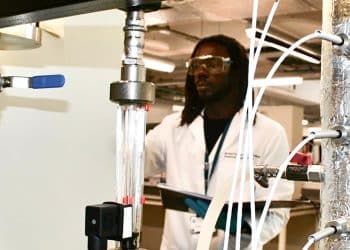The medicinal potential innate in mushrooms was recognized early.
Ötzi the Iceman, a glacier mummy preserved for 5,300 years, was found wearing a leather necklace studded with birch polypores (Piptoporus betulinus), mushrooms that can eradicate intestinal parasites. His digestive tract was full of whipworm eggs.
Nowadays, the bioactive compounds present in mushrooms have been documented extensively. These include polysaccharides, triterpenoids, phenolic compounds, steroids, and other nitrogen-containing constituents. So, mushroom extract studies show that these compounds may have therapeutic value.
Mushroom Extracts
The desired compounds can be extracted from mushroom fruiting bodies. Extraction can be accomplished by either water or organic solvents, depending on the kind of compounds of interest and the intended application. For example, water extraction is often preferred for dietary supplements.
Why Extraction?
The extraction process produces a concentrated form of the mushroom components. This enables higher bioavailability of the compounds and is often more efficacious than consuming mushrooms whole.
Mushroom cell walls contain chitin, an extremely tough polysaccharide that’s also found in crustacean shells. Extraction breaks down the cell walls, making it easier for the body to absorb and utilize any beneficial compounds.
Benefits of Mushroom Extracts
Studies have linked mushroom extracts to various health benefits.
Anticancer
At least six mushroom polysaccharides are being examined for their potentially anticarcinogenic effect. Lentinan, produced by shitake mushrooms, has the most promise so far.
Tissue culture experiments in mice show evidence that lentinan helps the immune system fight cancer cells. A Japanese clinical trial that looked at the effect of lentinan on cancer patients found that they survived longer if the compound was combined with traditional anticancer drugs and chemotherapy.
The research is far from conclusive, however. Lentinan is a specific version of a polysaccharide present in all fungi. Some experts suspect that any mushroom can deliver the same effect.
Immune Support
Mushroom extracts are also studied for their immunostimulant properties. Polysaccharide-K (PSK), found in the turkey tail mushroom (Trametes versicolor), has been shown to increase NK and T-cell counts in cancer patients NK cells, also referred to as natural killer cells, boost immune function by limiting the spread of tumors and controlling tissue damage.
Thus, a study using healthy participants found similar results. 52 people consumed mushroom extracts every day for four weeks. At the end of the experiment, they showed “significant immune effects.” Their NK and T-cell counts were raised as well.
Cardiovascular
Consuming mushroom extracts may limit the risk of cardiovascular disease. A systematic review published in the American Journal of Medicine in 2021 found that mushroom consumption was associated with reduced blood pressure and cholesterol levels.
Disadvantages of Mushroom Extracts
The science supporting their use is limited and largely based on animal studies. The few clinical trials that looked at the effect of mushrooms on human subjects had a small sample size and short duration.
In addition, study parameters may not mimic commercial use. For instance, consuming pure lentinan may have a different effect than consuming a whole mushroom or a full-specturm mushroom extract.
Conclusion
Mushroom extracts are gaining increasing attention for their medicinal benefits. Evidence suggests that they may have broad effects on the body, including fighting cancer and increasing immune function and cardiovascular health.
Further research is needed to confirm these effects and understand the mechanisms behind them. Factors such as long-term safety and whether the extracts are best consumed as a full-spectrum or in isolated forms are also still unknown.
References:
- Nowakowski, P., Markiewicz-Żukowska, R., et al (2021). Treasures from the forest: Evaluation of mushroom extracts as anti-cancer agents. Biomedicine & Pharmacotherapy, 143, 112106. https://doi.org/10.1016/j.biopha.2021.112106
- Sivanesan, I., Muthu, M.,et al (2022). Mushroom Polysaccharide-Assisted Anticarcinogenic Mycotherapy: Reviewing Its Clinical Trials. Molecules, 27(13), 4090. https://doi.org/10.3390/molecules27134090
- Money, N. P. (2016). Are mushrooms medicinal? Fungal Biology, 120(4), 449-453. https://doi.org/10.1016/j.funbio.2016.01.006
- Benson, K. F., Stamets, P., et al (2018). The mycelium of the Trametes versicolor (Turkey tail) mushroom and its fermented substrate each show potent and complementary immune activating properties in vitro. BMC Complementary and Alternative Medicine, 19. https://doi.org/10.1186/s12906-019-2681-7
- Lucius, K. (2020). Medicinal mushrooms: Current use in clinical practice. Alternative and Complementary Therapies, 26(3), 119–126. https://doi.org/10.1089/act.2020.29275.kha
- Krittanawong, C., Isath, A., et al (2021). Mushroom Consumption and Cardiovascular Health: A Systematic Review. The American Journal of Medicine, 134(5), 637-642.e2. https://doi.org/10.1016/j.amjmed.2020.10.035












